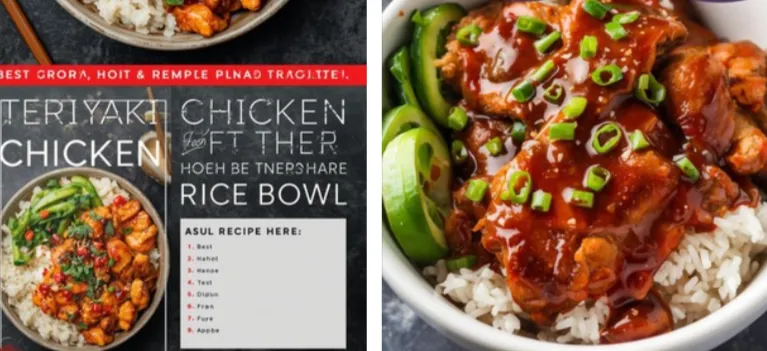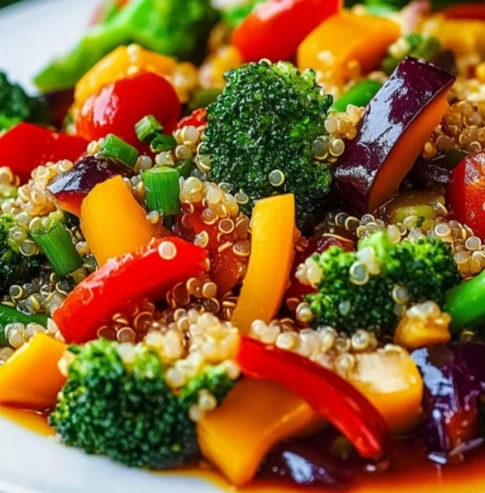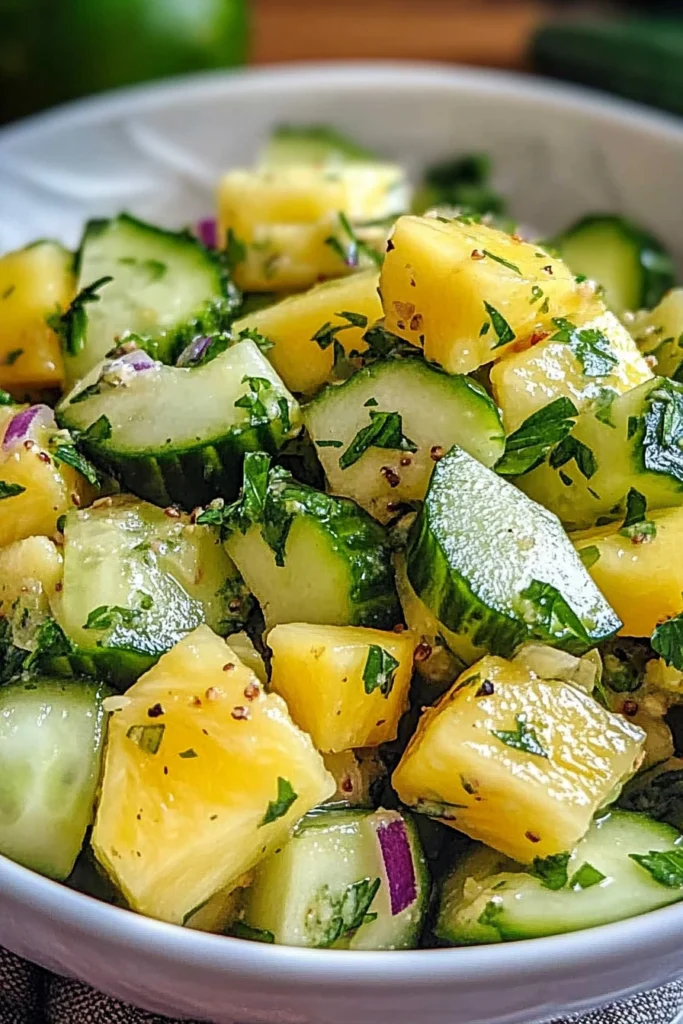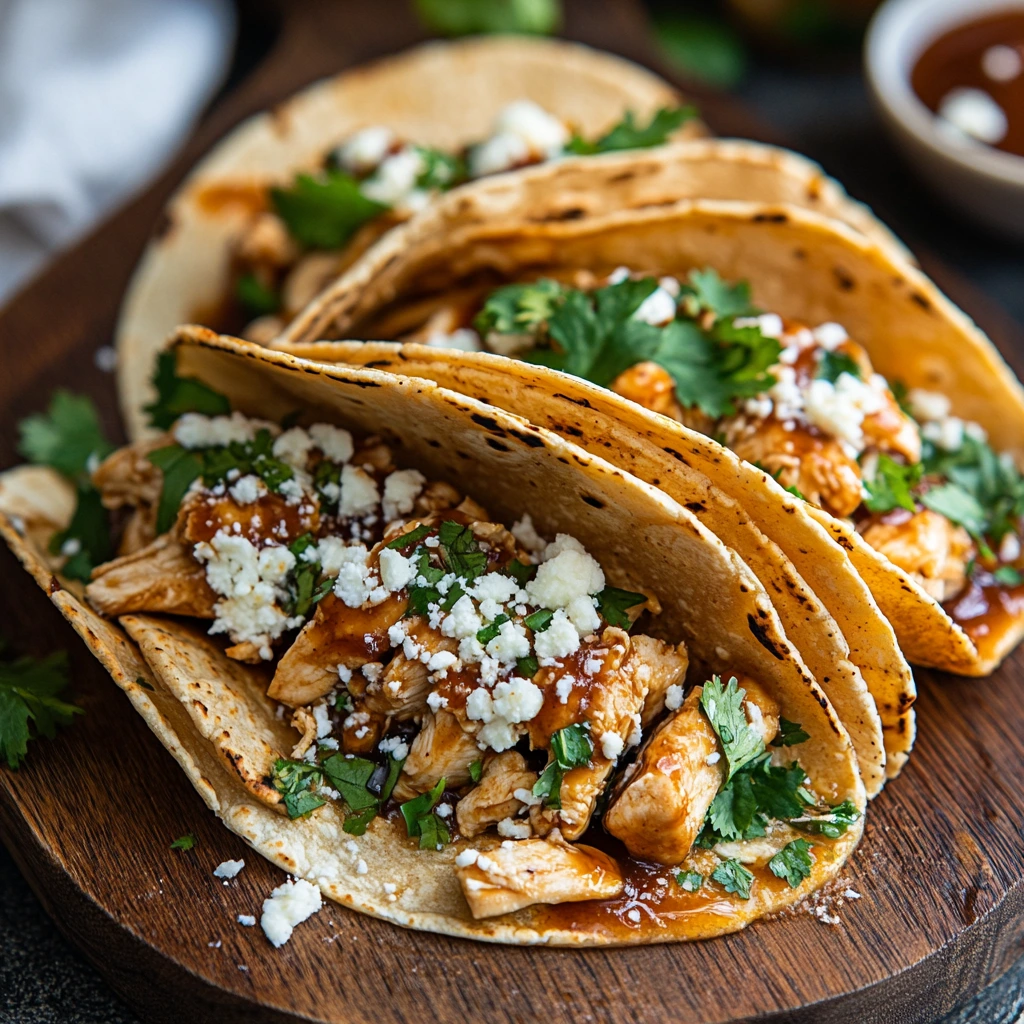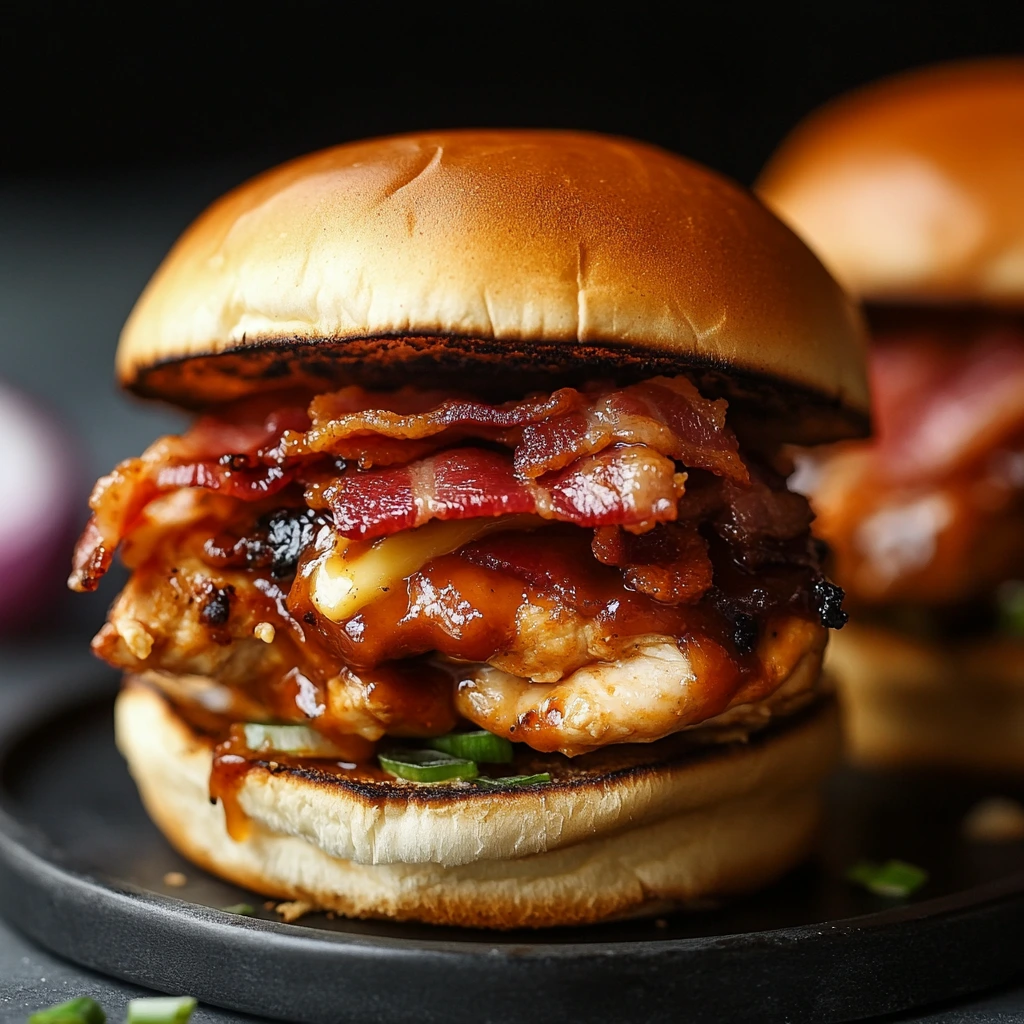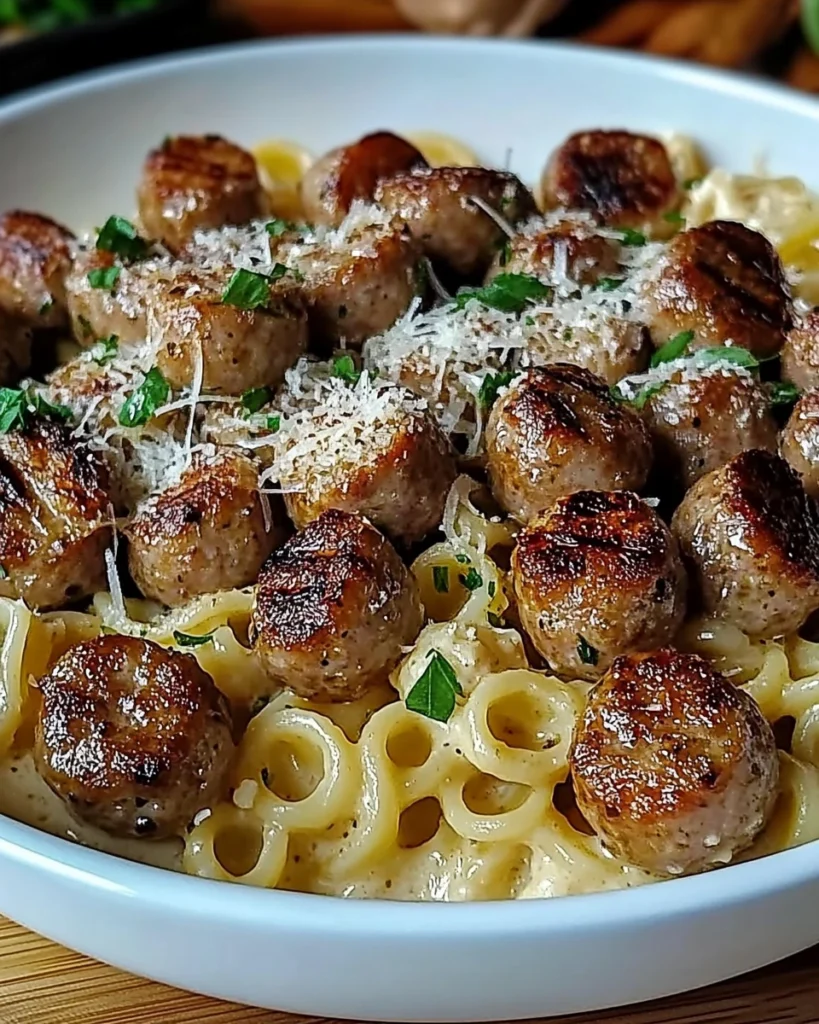There’s something deeply satisfying about a Teriyaki Chicken Rice Bowl—the glossy, caramelized sauce clinging to tender pieces of chicken, the comforting bed of steamed rice, and the vibrant vegetables that make the dish not just delicious but visually stunning. It’s a dish that combines flavor, balance, and simplicity, making it a go-to recipe for both busy weeknights and meal prep Sundays.
Originating from Japan, the term “teriyaki” comes from “teri” (shine or luster) and “yaki” (grilled or broiled). The glossy, flavorful glaze is the heart of the dish, combining soy sauce, mirin, sugar, and sometimes sake to achieve that perfect balance between salty, sweet, and umami.
What makes the Teriyaki Chicken Rice Bowl so popular globally is its adaptability—you can easily make it your own with different proteins, grains, or veggies. Whether you’re trying to eat healthy, impress your guests, or just whip up something comforting in under 30 minutes, this dish never disappoints.
A Brief History of Teriyaki: From Japan to Global Fame
While teriyaki began as a traditional Japanese cooking method, its journey to global kitchens has been fascinating. The original Japanese version used fresh fish, like yellowtail or mackerel, grilled and brushed with a soy-mirin glaze. When Japanese immigrants arrived in Hawaii and the U.S. West Coast in the early 20th century, they adapted the recipe using locally available ingredients—notably chicken and beef—and added sugar or pineapple juice for sweetness.
By the 1960s, “teriyaki” had become synonymous with Japanese-American cuisine. Today, it’s a staple at both Japanese restaurants and home kitchens, often served in rice bowls or bento boxes, making it one of the most recognizable Asian dishes worldwide.
The Secret to Perfect Teriyaki Sauce
The magic of any Teriyaki Chicken Rice Bowl lies in its sauce—a delicate blend that delivers umami richness, sweetness, and a glossy finish. Here’s what you need to know:
Classic Teriyaki Sauce Ingredients:
-
Soy Sauce: The salty, savory base. Opt for low-sodium soy sauce to control the salt level.
-
Mirin: A sweet Japanese rice wine that adds mild acidity and depth.
-
Sugar or Honey: Balances out the saltiness and helps achieve that shiny glaze.
-
Garlic and Ginger: Optional but essential for extra aroma and warmth.
-
Cornstarch Slurry: A little cornstarch mixed with water helps thicken the sauce to that signature syrupy consistency.
Ingredients You’ll Need for the Teriyaki Chicken Rice Bowl
Here’s the complete list for a restaurant-quality dish made right in your kitchen:
For the Chicken:
-
1.5 lbs (700g) boneless, skinless chicken thighs or breasts
-
1 tbsp vegetable oil
-
Salt and pepper to taste
the Teriyaki Sauce:
-
1/4 cup soy sauce
-
3 tbsp mirin (or rice vinegar + 1 tsp sugar as substitute)
-
2 tbsp brown sugar or honey
-
1 tsp fresh grated ginger
-
1 clove garlic, minced
-
1 tsp cornstarch + 2 tbsp water
the Rice and Toppings:
-
2 cups cooked jasmine or sushi rice
-
1 cup steamed broccoli
-
1/2 cup shredded carrots
-
1/4 cup sliced green onions
-
1 tsp toasted sesame seeds
-
Optional: Avocado slices or pickled ginger
Step-by-Step Cooking Instructions
1: Prepare the Chicken
Start by trimming excess fat from the chicken. Pat it dry with paper towels to ensure it sears well. Season lightly with salt and pepper.
Heat oil in a nonstick skillet or wok over medium-high heat. Add chicken pieces and cook until golden brown—about 5–6 minutes per side, depending on thickness. Remove and set aside.
2: Make the Teriyaki Sauce
In the same pan, reduce the heat to medium. Add soy sauce, mirin, brown sugar, garlic, and ginger. Stir continuously for about 2–3 minutes until the sauce starts to simmer and thicken slightly.
In a small bowl, mix cornstarch with water, then pour it into the sauce. Stir until it reaches a glossy, syrup-like texture. Taste and adjust—add more sugar for sweetness, or soy sauce for depth.
3: Combine Chicken and Sauce
Return the cooked chicken to the pan. Toss to coat evenly, letting it simmer for 2–3 minutes until the sauce clings perfectly to each piece. The chicken should look glossy, flavorful, and slightly caramelized around the edges.
4: Assemble the Bowl
Scoop warm rice into a bowl. Top with the saucy teriyaki chicken, followed by your choice of vegetables—steamed broccoli, shredded carrots, edamame, or snap peas work great. Sprinkle sesame seeds and green onions for garnish.
Optional: drizzle extra sauce on top for that irresistible teriyaki shine!
Healthy Variations and Customizations
One of the best things about Teriyaki Chicken Rice Bowls is how customizable they are. Here are some healthy and creative variations:
Protein Swaps
-
Beef Teriyaki Bowl: Use flank steak strips for a heartier option.
-
Salmon or Tofu Teriyaki Bowl: Ideal for pescatarians and vegetarians.
-
Shrimp Teriyaki: Cooks in under 5 minutes and pairs beautifully with pineapple.
Rice Alternatives
-
Brown Rice: Adds fiber and a nutty flavor.
-
Cauliflower Rice: Perfect for a low-carb version.
-
Quinoa or Jasmine Rice: Great gluten-free options.
Veggie Add-Ins
-
Bok choy, zucchini, red peppers, snow peas, or mushrooms all work beautifully.
-
Add fresh avocado slices for creaminess or edamame for extra protein.
Nutritional Benefits of Teriyaki Chicken Rice Bowl
This dish isn’t just tasty—it’s balanced and nourishing.
| Nutrient | Benefit |
|---|---|
| Protein (Chicken) | Builds muscle, keeps you full longer |
| Carbohydrates (Rice) | Provides energy and balances the meal |
| Vegetables | Add fiber, vitamins, and color |
| Soy Sauce & Ginger | Offer antioxidants and gut benefits |
By controlling your sauce ingredients (especially sugar and sodium), you can make this dish healthy enough for everyday meals.
Meal Prep & Storage Tips
If you’re a fan of batch cooking, the Teriyaki Chicken Rice Bowl is perfect for you.
-
Meal Prep Tip: Double the recipe and divide into airtight containers with rice and veggies. Keep sauce separate if possible.
-
Storage: Refrigerate for up to 4 days or freeze for up to 2 months.
-
Reheating: Microwave or reheat in a pan with a splash of water to restore moisture.
This makes it an excellent lunchbox or dinner option that’s ready whenever you are.
Serving Ideas and Pairings
To elevate your Teriyaki Chicken Rice Bowl experience, pair it with:
-
Miso Soup – a warm, savory starter.
-
Cucumber Salad – light and refreshing.
-
Green Tea or Ginger Lemonade – to balance the sweetness of the teriyaki glaze.
If you’re hosting, serve it family-style with extra toppings so everyone can customize their own bowl.
Chef’s Tips for Perfect Teriyaki Every Time
-
Use Chicken Thighs for juicier, more flavorful results.
-
Don’t overcrowd the pan—it prevents caramelization.
-
Simmer, don’t boil the sauce to maintain that glossy texture.
-
Taste at every stage—adjust sweetness and saltiness gradually.
-
Add a final brush of sauce just before serving for extra shine.
Cultural Significance: The Japanese Essence of Balance
Teriyaki embodies the Japanese concept of “umami harmony.” Every element—soy, sweetness, rice, and freshness—balances one another. In Japan, meals aren’t just about taste but also about visual appeal and balance between protein, carbs, and vegetables.
The rice bowl format represents convenience and completeness. It’s a symbol of comfort food in Japanese homes—simple, nourishing, and satisfying.
Why You’ll Love This Dish
-
✅ Quick: Ready in 30 minutes.
-
✅ Healthy: Balanced meal with lean protein and veggies.
-
✅ Budget-Friendly: Simple pantry ingredients.
-
✅ Kid-Friendly: Sweet-savory sauce everyone loves.
-
✅ Meal-Prep Friendly: Perfect for busy weeks
Frequently Asked Questions
Q: Can I make this gluten-free?
Yes! Use tamari or coconut aminos instead of soy sauce.
Q: Can I use frozen chicken?
Thaw completely first to ensure even cooking and sauce absorption.
Q: How do I make it spicier?
Add chili flakes, sriracha, or a touch of wasabi to the sauce.
Q: What if I don’t have mirin?
Use rice vinegar mixed with sugar, or a splash of apple juice for sweetness.
Final Thoughts
The Teriyaki Chicken Rice Bowl is the perfect blend of simplicity, taste, and tradition. It proves that home-cooked meals don’t need to be complicated to be satisfying. With its glossy sauce, tender chicken, and customizable toppings, it’s a dish that brings the flavors of Japan straight to your table—no takeout required.

